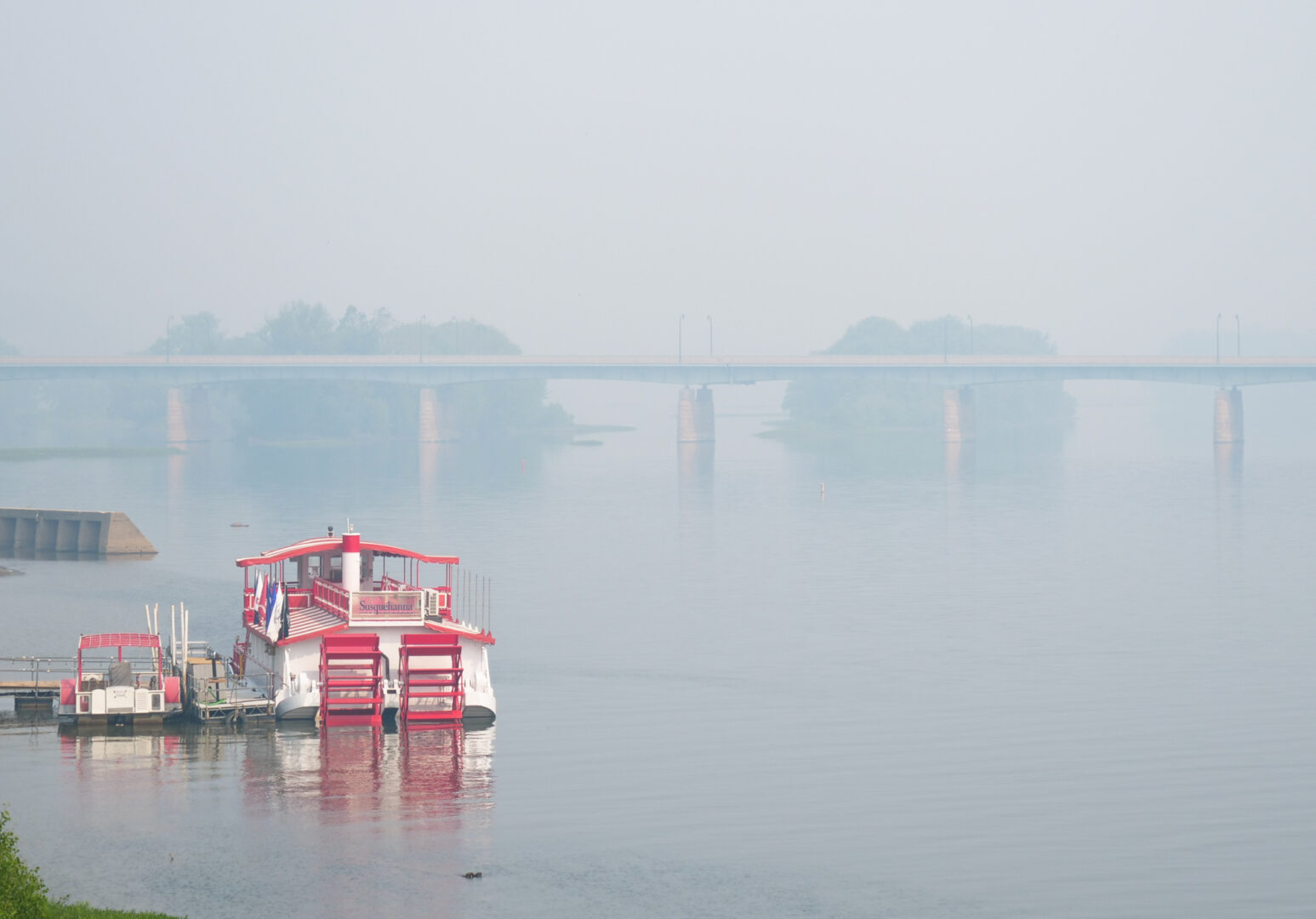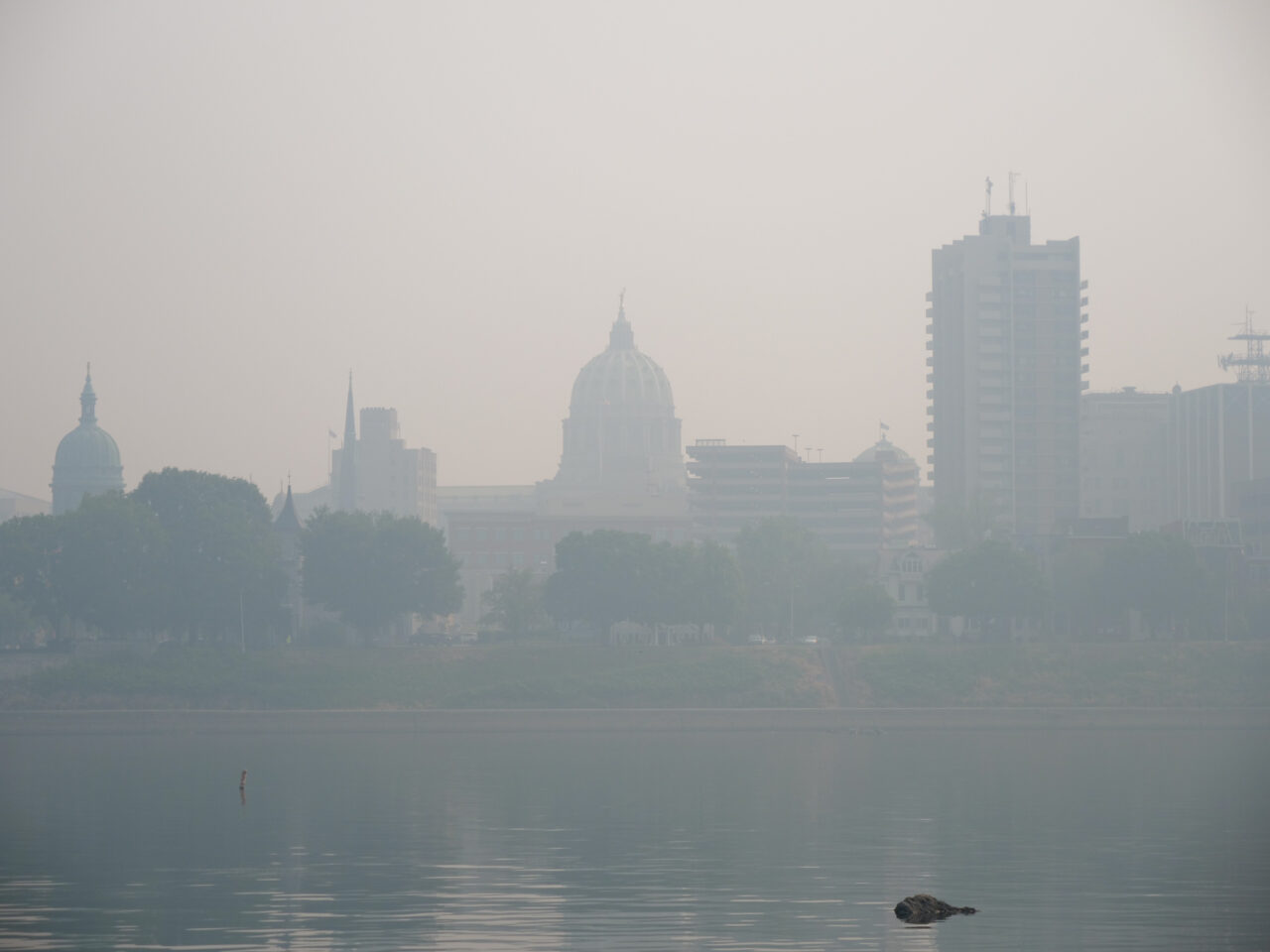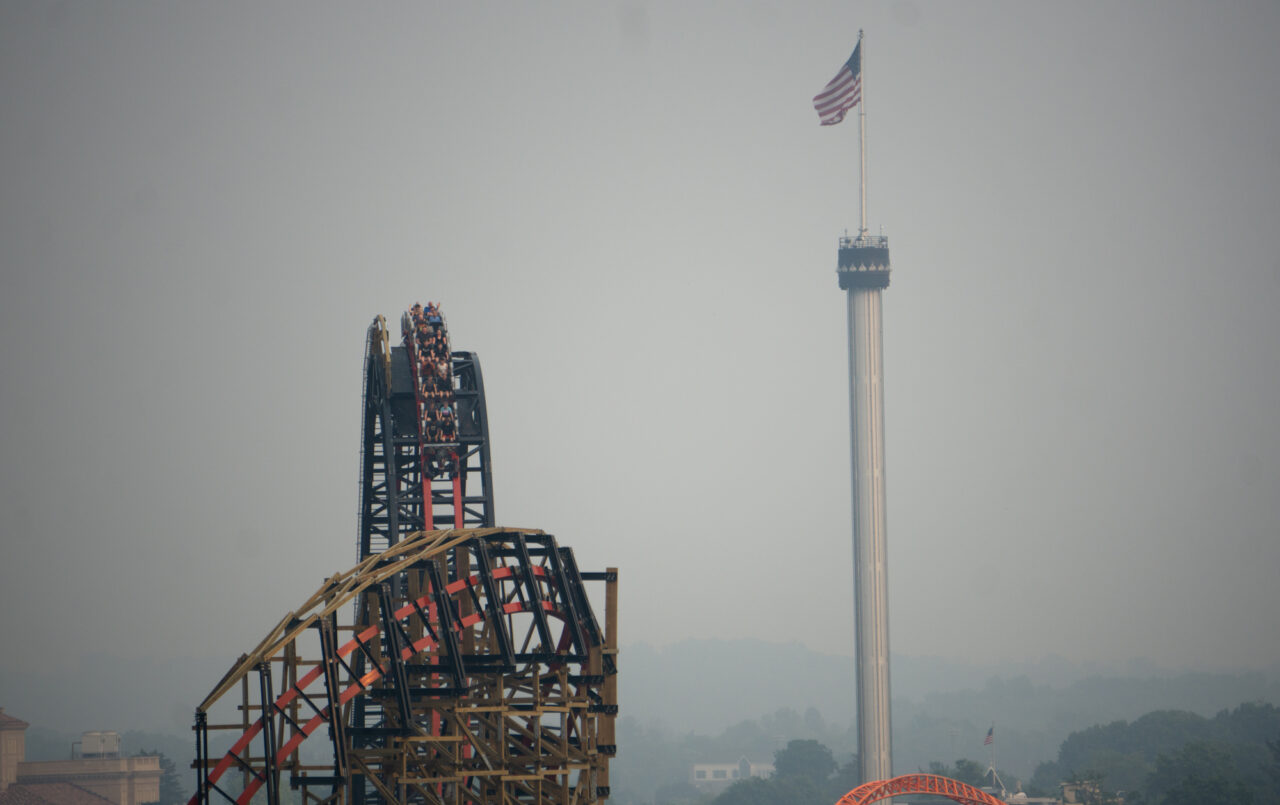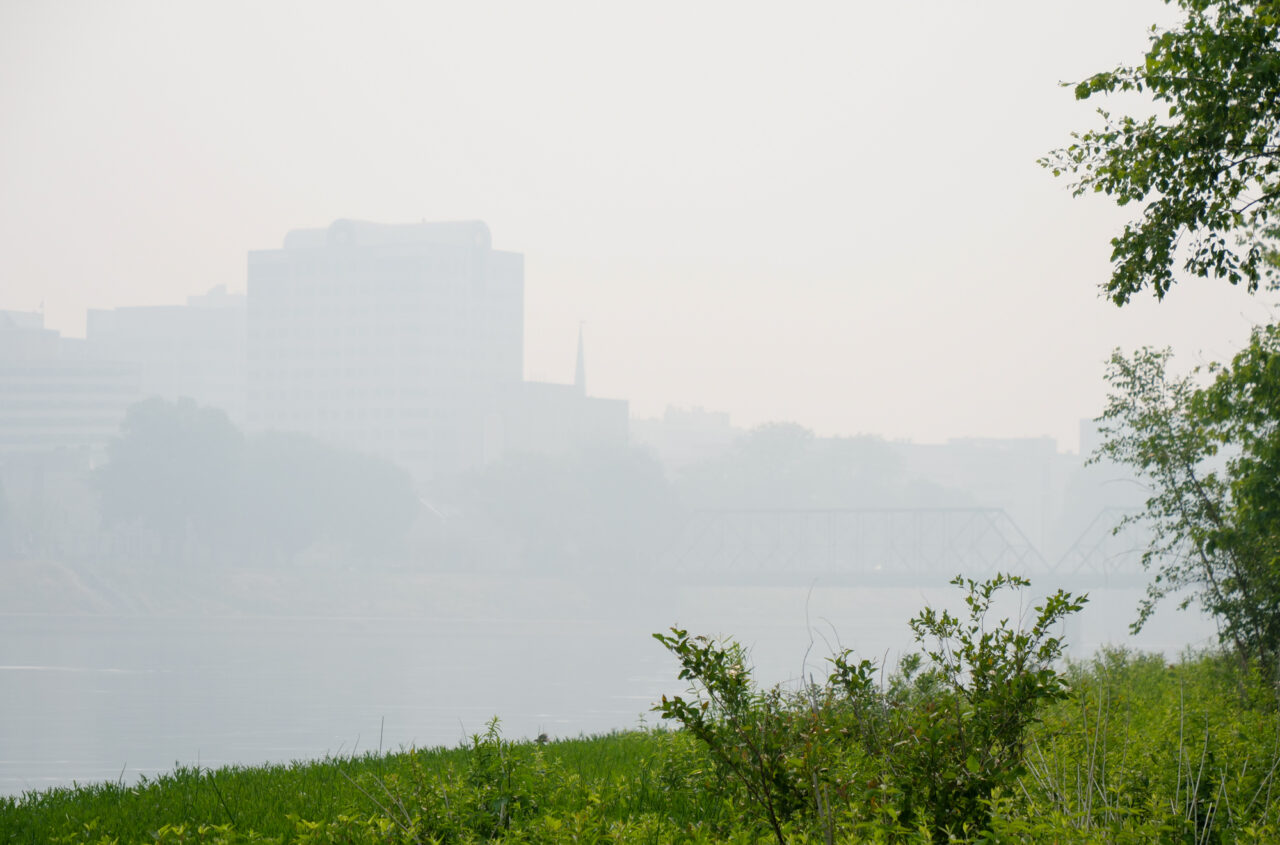
Haze hangs over Harrisburg as smoke from Canadian wildfires filtered into Pennsylvania on June 8, 2023. The smoke degraded air quality across Pennsylvania and other states in the northeast. Jeremy Long - WITF News


Haze hangs over Harrisburg as smoke from Canadian wildfires filtered into Pennsylvania on June 8, 2023. The smoke degraded air quality across Pennsylvania and other states in the northeast. Jeremy Long - WITF News

Haze hangs over Harrisburg as smoke from Canadian wildfires filtered into Pennsylvania on June 8, 2023. The smoke degraded air quality across Pennsylvania and other states in the northeast. Jeremy Long - WITF News
Pennsylvania is under a cloud of unhealthy air caused by smoke from Canadian wildfires.
The state Department of Environmental Protection on Wednesday declared a Code Red Air Quality Action Day for the entire state.
But in some places, actual air quality reached more dangerous purple and maroon levels.
The federal Environmental Protection Agency measures and rates air pollution on a scale from 0 to 500 called the Air Quality Index. The lower the number, the cleaner the air.
The AQI is also broken into colors.
Green (0-50) is healthy. Yellow (51-100) is seen as acceptable.
Orange (101-150) means the air is likely to affect certain groups, such as the very young, old, and people with asthma.
An AQI in the red zone (151-200) means even people without sensitivities could feel health effects from breathing the dirty air. The EPA recommends people limit outdoor activity.
Purple (201-300) is very unhealthy and maroon (301-500) is hazardous. When the AQI is above 300, it ranks as a health emergency and all people in the area should avoid spending time outside.



DEP’s air quality action alerts are based on forecasts and are generally not updated frequently in a day, which is why actual air quality can be more severe than what is warned in the alert. Usually the alerts are for specific geographic locations because of weather patterns and nearby industry.
DEP spokesman Neil Shader said the pollution caused by Canadian wildfire smoke is uncharted territory for the agency.
During periods of high pollution, people can check area-specific AQIs, updated hourly, at airnow.gov.
The website shows two AQI scores; one for particle pollution and one for ozone. Particle pollution is made up of very small pieces of soot, metals or other toxics that can get embedded in the lungs. Ozone is a gas that’s harmful when breathed in. It forms from a combination of heat and different pollutants known as volatile organic compounds.
EPA is forecasting an AQI in the orange range for Friday. DEP says smoke is expected to hang around into the weekend, though it won’t be as dense as Wednesday and Thursday.
StateImpact Pennsylvania is a collaboration among WITF, WHYY, and the Allegheny Front. Reporters Reid Frazier, Rachel McDevitt and Susan Phillips cover the commonwealth’s energy economy. Read their reports on this site, and hear them on public radio stations across Pennsylvania.
(listed by story count)
StateImpact Pennsylvania is a collaboration among WITF, WHYY, and the Allegheny Front. Reporters Reid Frazier, Rachel McDevitt and Susan Phillips cover the commonwealth’s energy economy. Read their reports on this site, and hear them on public radio stations across Pennsylvania.
Climate Solutions, a collaboration of news organizations, educational institutions and a theater company, uses engagement, education and storytelling to help central Pennsylvanians toward climate change literacy, resilience and adaptation. Our work will amplify how people are finding solutions to the challenges presented by a warming world.